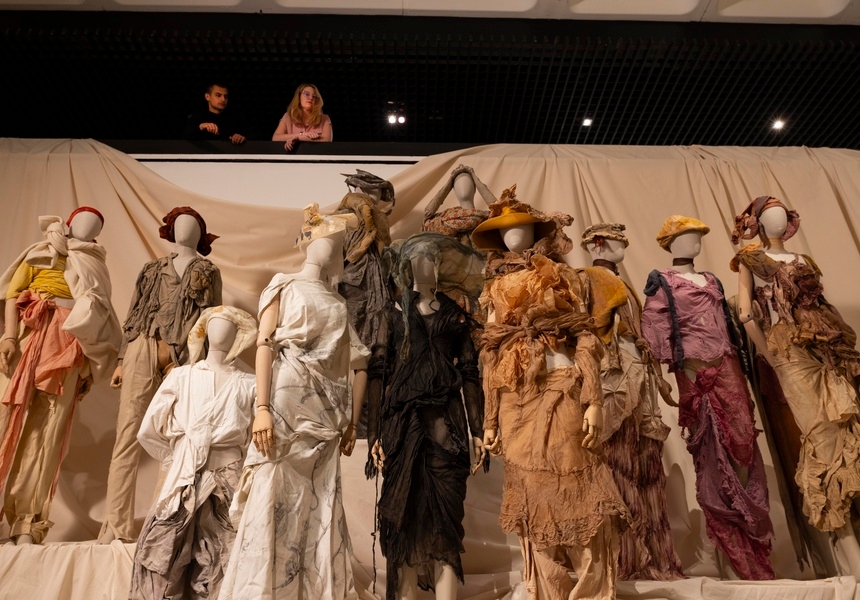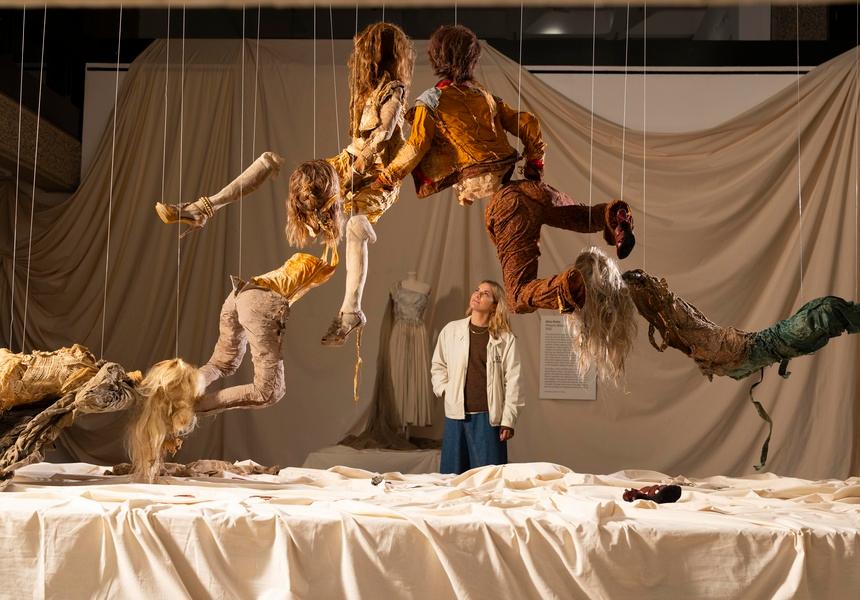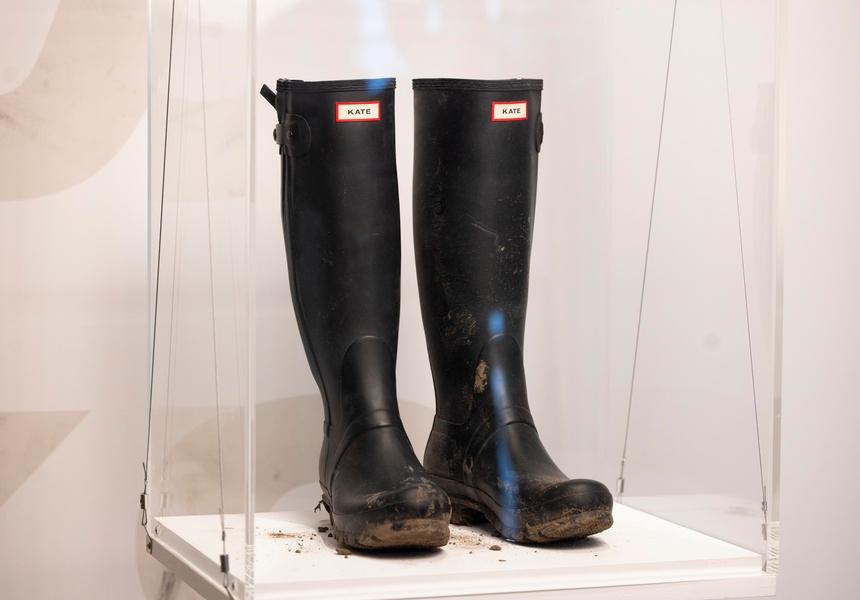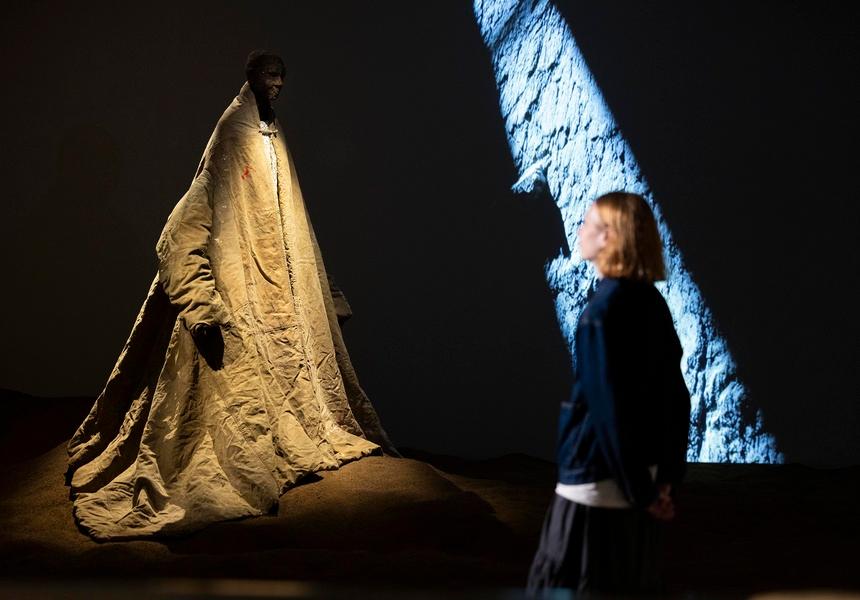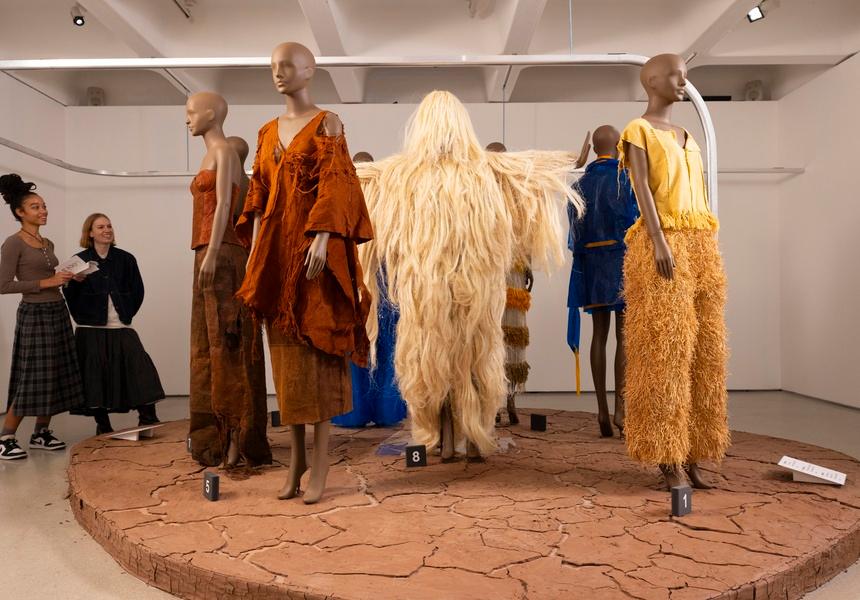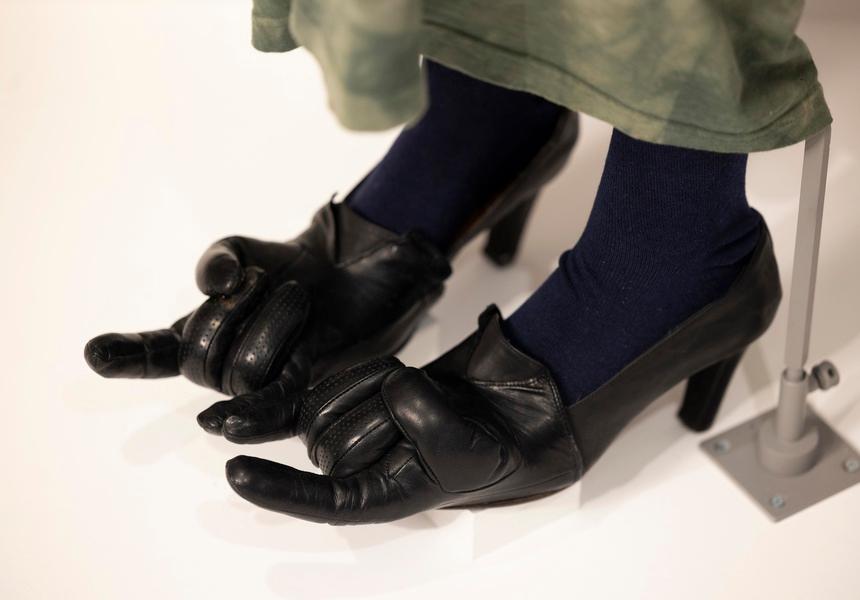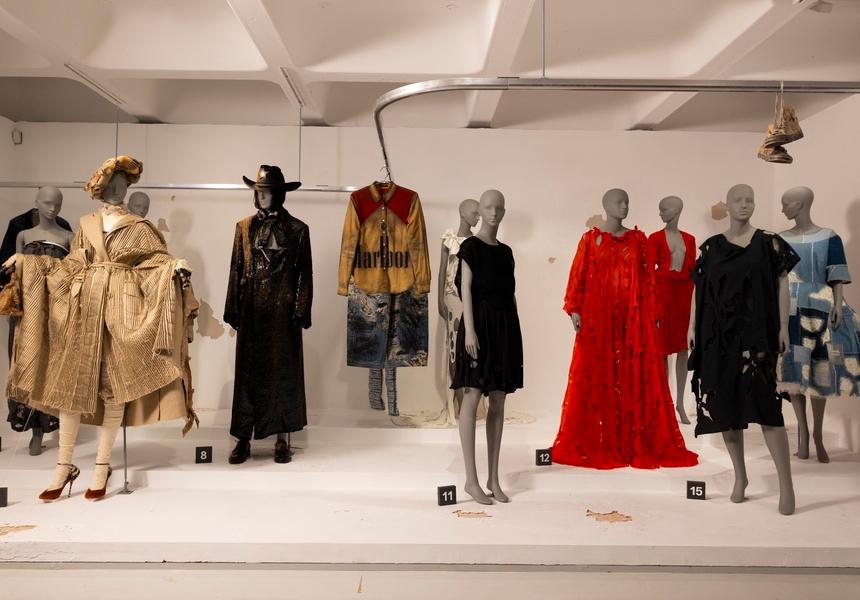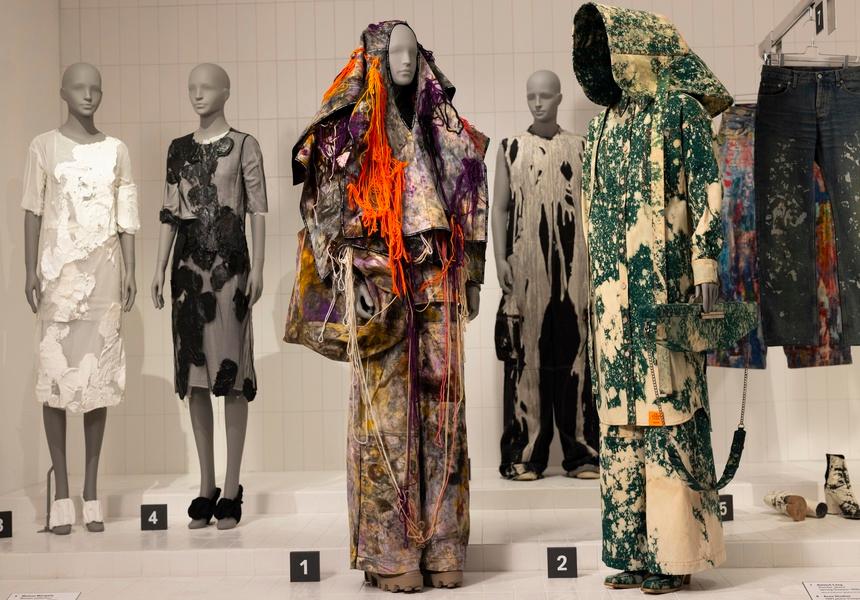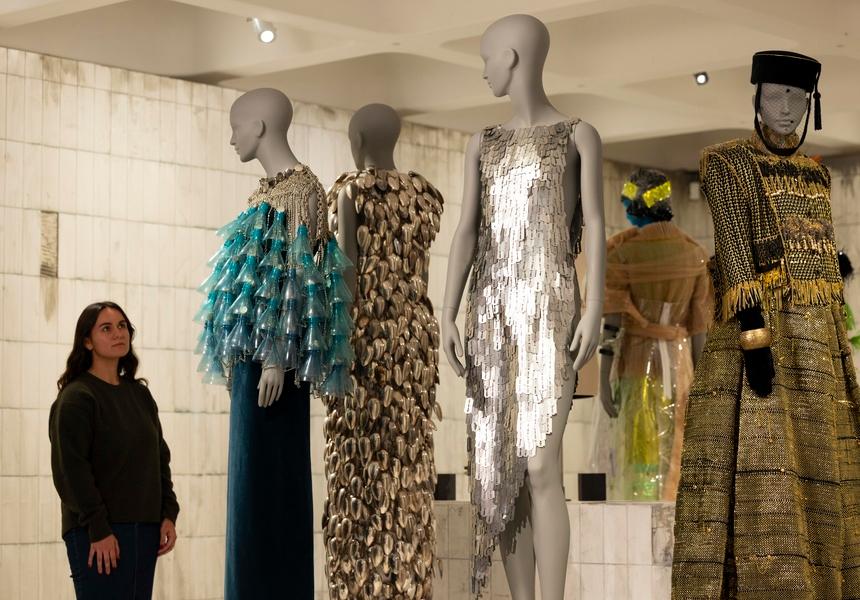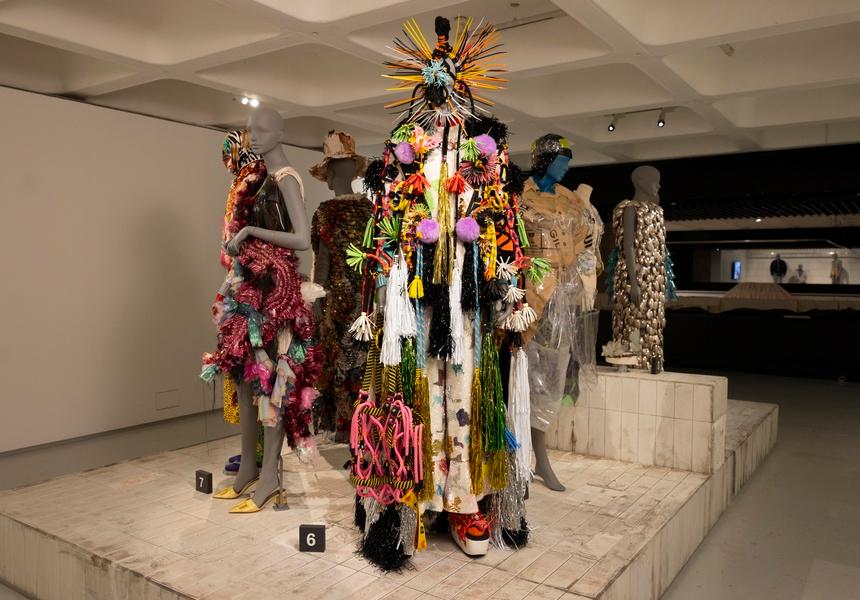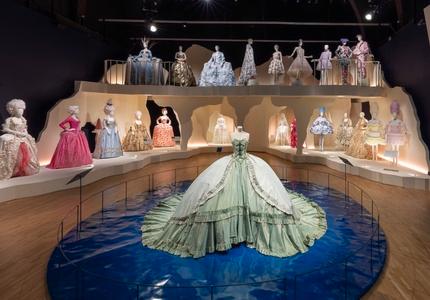For its first major fashion exhibition in eight years, the Barbican flips the script to celebrate not the industry’s ongoing quest for perfection but its relationship with dirt, grime, ruin and decay.
“Dirty Looks recognises fashion not only as a form of artistic expression but also as a lens through which to examine cultural, environmental and political urgencies,” Shanay Jhavari, the Barbican’s head of visual arts, tells Broadsheet. “It invites us to reconsider beauty, value and the regenerative power of making.”
It opens with two pairs of wellies, one very clean set belonging to Queen Elizabeth II and a muddier, monogrammed pair of Hunters worn by Kate Moss at Glastonbury, to root visitors in the “nostalgia of mud”. From there things get much grubbier, charting a fascination with dirty aesthetics that spans more than 100 looks from the past half-century.
“Nostalgia of mud” was a phrase popularised by journalist Tom Wolfe in a 1970 New York magazine article entitled Radical Chic, in which he described modern society as having a mass yearning for the rural, rustic and primitive. The term was first coined by French playwright Émile Augier in 1855 but borrowed again later by Malcolm McLaren and Vivienne Westwood for the title of their 1982 autumn/winter collection (and, subsequently, a short-lived shop on St Christopher’s Place), from which a peasant-chic garment is displayed early in the exhibition, alongside archive runway footage of its launch.
Westwood’s ragged patchwork aesthetic is an obvious reference point for fashion’s flirtation with filth but as you explore the upper level (grouped thematically in degrees of dirtiness) there’s a lengthy rollcall of pioneering designers who have embraced imperfection. Multi-era Margiela abounds. Peak-punk Zandra Rhodes sits alongside Demna’s Balenciaga in a room focusing on the torn and the worn.
The famous “shipwreck dress” from Alexander McQueen’s 2003 Irere collection is a standout among the Romantic Ruins display, and Robert Wun’s 2023 wine-stained gown – accentuated with Swarovski crystals – encapsulates the Stains as Ornaments section rather fittingly.
Turkish-Cypriot designer Hussein Chalayan, who began experimenting with burying and exhuming clothes scattered with metal filings in his 1993 Central Saint Martins graduate collection, has seven slowly degrading pieces spotlighted in a room titled Future Archaeology. Even the gallery itself has been deliberately distressed with dented walls and peeling paint.
Interestingly after a tour of big-hitters, the spacious lower gallery is mostly given over to young contemporary artists and designers including the corroding metal garments of Yaz XL, the surreal, subversive corsetry of Michaela Stark, and Copenhagen purveyors of “bogcore” Solitude Studios, whose central Before the Orgy tableau of “modern bog bodies” required an intricate three-day installation. “We’ve come over a few times for photoshoots and meetings,” co-creator Sophie Martinussen tells Broadsheet. “But this is our first time exhibiting in London – we find a real resonance here.”
As well as the artful sullying of individual items, fashion’s role as a polluter is also confronted and the Glittering Debris section is home to more than a dozen trash-into-treasure couture pieces, including dresses made from spoons (Hodakova), plastic bottles (Paco Rabanne) and razor blades (that politically charged Andrew Groves ’90s number). JW Anderson’s notorious pigeon clutch also makes a sneaky appearance.
Meanwhile the envelope-pushing work in contemporary sustainable design by both Japanese designer Yuima Nakazato (his most recent collection incorporated lab-grown fibres and all-new fabric recycling methods), and China’s Ma Ke (who uses hand-stitched, plant-dyed materials) points to the future of an industry wrestling with its unclean past.
Dirty Looks: Desire and Decay In Fashion runs at the Barbican until January 25 2026.
